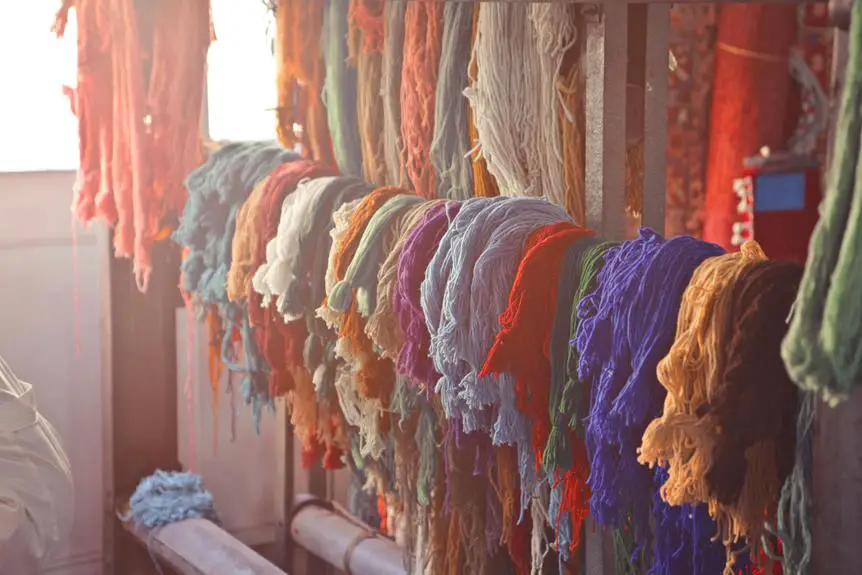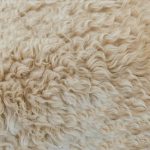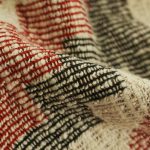You're likely familiar with the comfort and versatility of French Terry, but have you ever wondered if it can be blended with other fibers to create something entirely new? The answer is yes, and the possibilities are vast. By combining French Terry with other materials, you can enhance its natural properties and create fabrics tailored to specific needs. For instance, adding a hint of polyester can boost durability, while blending with bamboo can amplify softness. But what exactly happens when you mix and match fibers, and what are the benefits of each combination? Let's explore this further.
Table of Contents
Benefits of Blending French Terry
When you blend French Terry with other fabrics, you can create a unique textile that combines the benefits of each material, resulting in a more durable, versatile, and comfortable final product.
By mixing French Terry with other fibers, you can enhance its natural properties, such as softness, breathability, and moisture-wicking abilities. This blending process allows you to create a fabric that suits your specific needs, whether it's for athletic wear, loungewear, or even home decor.
Blending French Terry with other fibers can also improve its performance in various environments.
For example, adding a bit of polyester can increase its wrinkle resistance and durability, making it perfect for activewear.
On the other hand, blending it with natural fibers like cotton or bamboo can enhance its breathability and softness, making it ideal for loungewear or bedding.
By experimenting with different blends, you can create a wide range of fabrics with unique properties that cater to various uses and preferences.
This flexibility is one of the most significant benefits of blending French Terry with other fibers.
Common Fiber Blends for French Terry
French Terry can be combined with various fibers to create unique blends that cater to different needs and applications. Some common fiber blends include cotton, polyester, and bamboo. These blends offer distinct advantages, such as improved durability, wrinkle resistance, and moisture-wicking properties.
When you blend French Terry with cotton, you create a breathable and soft fabric ideal for casual wear. Adding polyester to the mix increases the fabric's durability and resistance to shrinkage, making it perfect for activewear. Bamboo blends, on the other hand, provide exceptional moisture-wicking properties and a silky texture, ideal for loungewear and sleepwear.
You can experiment with other fiber blends, such as wool, spandex, or linen, to create unique fabrics with specific properties. Adding wool to French Terry creates a warm and insulating fabric perfect for winter wear. Spandex adds stretch and flexibility, ideal for athletic wear.
Effects on Softness and Texture
Combining different fibers with French Terry not only affects its performance but also significantly impacts its softness and texture, which can make or break the wearer's comfort and overall experience.
As you experiment with blending French Terry with other fibers, you'll notice a range of effects on its softness and texture.
- Soft, peach-like skin: Adding silk or bamboo fibers to French Terry can create a sumptuous texture that feels like a warm hug.
- Airy lightness: Blending French Terry with mesh or Tencel fibers can produce a fabric that's incredibly lightweight and breathable.
- Snug, fleecy warmth: Combining French Terry with fleece or Sherpa fibers creates a cozy fabric that's perfect for colder climates.
- Smooth, lustrous finish: Adding a small percentage of synthetic fibers like polyester or nylon to French Terry can enhance its smoothness and sheen.
As you explore these blends, keep in mind that even small changes to the fiber composition can significantly impact the overall softness and texture of your French Terry fabric.
Durability and Performance Enhancements
Blending French Terry with other fibers can significantly boost its durability and performance, allowing it to withstand the rigors of frequent wear and tear. By combining French Terry with fibers like polyester or nylon, you can create a fabric that's more resistant to pilling, snagging, and fraying. This makes it an excellent choice for activewear, outdoor gear, or any application where durability is key.
| Fiber Blend | Performance Enhancement |
|---|---|
| French Terry + Polyester | Improved wrinkle resistance and easy care |
| French Terry + Nylon | Enhanced abrasion resistance and durability |
| French Terry + Spandex | Increased stretch and recovery for improved fit |
When you blend French Terry with other fibers, you can also enhance its performance in specific areas. For example, adding spandex can improve the fabric's stretch and recovery, making it ideal for athletic wear. By choosing the right fiber blend, you can create a French Terry fabric that meets your specific needs and requirements. Whether you're looking for durability, performance, or comfort, blending French Terry with other fibers can help you achieve your goals.
Popular French Terry Blend Ratios
When it comes to blending French Terry with other fibers, the ratio of fibers used is crucial to achieving the desired performance and durability, and some popular blend ratios offer a great starting point.
You'll want to consider the benefits of each fiber and how they'll work together to create the perfect blend.
80% Cotton, 20% Polyester: A great all-around blend for casual wear, offering a soft cotton base with added durability from polyester.
60% Cotton, 40% Rayon: Perfect for creating a flowy, drapey fabric with a soft, silky texture.
50% Cotton, 30% Polyester, 20% Spandex: Ideal for activewear, this blend offers a comfortable stretch and recovery.
70% Cotton, 30% Bamboo: A sustainable blend that combines the breathability of bamboo with the softness of cotton.
90% Cotton, 10% Linen: Great for creating a unique texture and adding a touch of elegance to your garment.
Frequently Asked Questions
Can French Terry Be Blended With Sustainable Fibers?
You can blend French terry with sustainable fibers like organic cotton, recycled polyester, or hemp to create a unique fabric. This blend combines the benefits of French terry's softness with eco-friendly materials, reducing environmental impact.
Is Blending French Terry With Other Fibers Cost-Effective?
You're likely wondering if blending French terry with other fibers is cost-effective. By combining it with other fibers, you can reduce production costs while maintaining quality, making it a potentially budget-friendly option for your textile projects.
Can French Terry Blends Be Used for Activewear?
You're considering using French terry blends for activewear. That's a great idea! French terry's softness and breathability make it perfect for workout clothes. You can blend it with moisture-wicking fibers for enhanced performance.
How Does Blending French Terry Affect Its Shrinkage Rate?
When you blend French Terry with other fibers, you'll notice a change in its shrinkage rate. The added fibers can either increase or decrease shrinkage, depending on their properties, so you'll need to test the blend.
Can French Terry Blends Be Used for Plus-Size Clothing?
When creating plus-size clothing, you'll want to consider the comfort and durability of French terry blends. You can use these blends to make flattering, comfortable garments that cater to a range of body types and preferences.
- How Does Ring Spun Cotton Affect Garment Fit and Shape Retention? - August 13, 2024
- What Are the Challenges in Producing Ring Spun Cotton? - August 13, 2024
- Is Ring Spun Cotton Suitable for Plus-Size Clothing? - August 13, 2024







